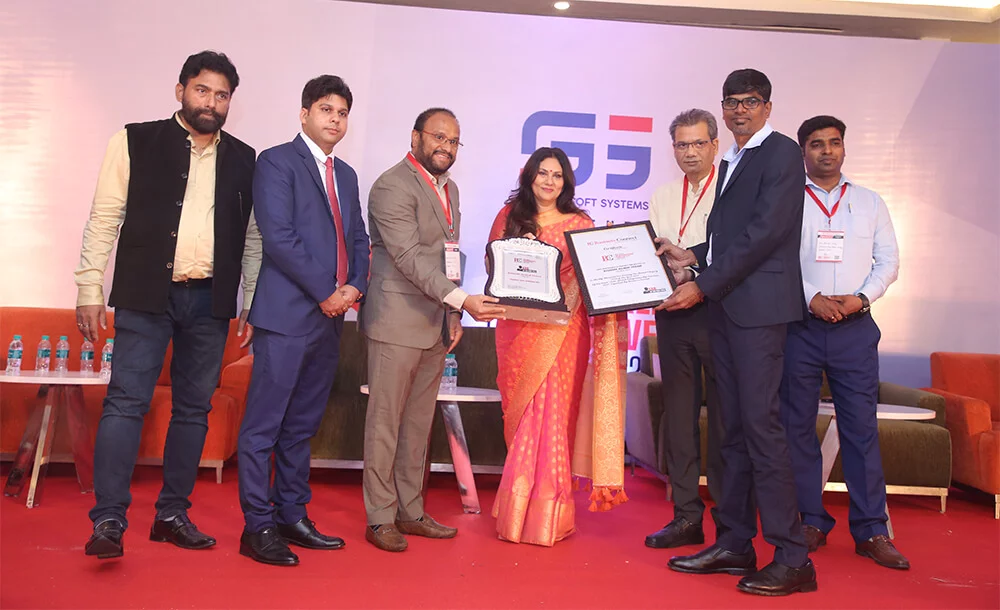
7 May 2022
Indo-Global Entrepreneurship Conclave - 2022
Venue: Hyatt Centric Janakpuri New Delhi
A Strategically Curated Forward-going Approach To Co-create A Better Tomorrow…
If the economy is growing, that generally means more wealth, more jobs and overall prosperity. However, the last two years have been very challenging for the Global Economy, including India. The coronavirus epidemic at global level brought the world economy to a standstill.
And, according to Statista, “While there is no way to tell exactly what the economic damage from the global COVID-19 coronavirus pandemic will be”, there is widespread agreement among economists that it will have severe negative impacts on the global economy and it could grow at its slowest rate since 2009 (OECD) these years due to the COVID-19 outbreak.
Even India has also been a worst sufferer, and according to an analysis of the Reserve Bank of India (RBI) predicts that India can not overcome COVID-19 losses until 2034-35, because the output losses for individual years have been worked out to Rs 19.1 lakh crore, Rs 17.1 lakh crore and Rs16.4 lakh crore for 2020-21, 2021-22 and 2022-23, respectively.
However, there are positive signs as well, as India is ina much better position than many other countries. Last month the IMF had projected a “fairly robust” growth of 8.2 per cent for India in 2022, making it the fastest-growing major economy in the world, almost twice faster than China’s 4.4 per cent.
But now a UN report states that India will grow by 6.4 per cent this year, little slower than the last year’s projection, due to higher inflationary pressures and uneven recovery of the labour market curbing private consumption and investment. But if we compare this projection with the global economy which is now projected to grow by only 3.1 per cent in 2022, down from the 4.0 per cent growth forecast released in January 2022, India “in that sense” is still ina better position “little bit” even as the Ukraine conflict impacts the global gross domestic product (GDP).
After this report MyGovindia tweeted, “As India marches on a high-growth trajectory, the country is set to remain the fastest growing economy in the world in FY 2022!”
India, with a GDP of $2.94 trillion, has been the fastest- growing economy in the world. It became the fifth-largest economy in 2019, overtaking the United Kingdom and France and expected to be one of the top three economic powers in the world over the next 10-15 years, backed by its robust democracy and strong partnerships. India is set to witness GDP growth of 8.0-8.5 per cent in 2022-23, supported by widespread vaccine coverage, gains from supply-side reforms and easing of regulations, robust export growth, and availability of fiscal space to ramp up capital spending.
The ‘Scars of the Pandemic’ after the perturbations from repeated waves of COVID-19 may not remain for long. “The year ahead is well poised for a pick-up in private sector investment with the financial system in a good position to provide support to the revival of the economy,” according to the Economic Survey 2021-22 presented by the Union Minister for Finance Smt Nirmala Sitharaman in the Parliament.
The dividends of reforms initiated to counter the pre-COVID slowdown along with additional measures and initiatives during the pandemic will help launch the economy onasustainable high growth path, it is being claimed.
By 2030, India will have the world’s largest workforce. Till the next decade, India will remain a relatively young nation with a median age of 31 years (compared to 42 in China and 40 inthe United States) and will have added more working age citizens to the world than any other country. India will gain nearly 10- 12 million working age people every year over the next decade, leading to a “working age majority”.
Today, India is at a very critical and tipping point, both in terms of economic growth and in the human development of its more than one billion citizens. The country, being the world’s largest democracy and the world’s second most populous nation, with nearly 1.38 billion people spread across hundreds of thousands of large urban centres, small towns and rural clusters is facing serious economic challenges. To tackle the scale of the challenge, interventions on both the national, state and local levels, including public-private partnerships at national and global levels, is necessary to right-skill and re-align the currentand the future workforce.
No one can deny that India is in a major economic slump. One can certainly describe it as a malaise that is not going to be easy to break out of, given the range of structural and cyclical factors that are all presently pointing downward. The financial sector is surely in need of major repair. It is essential for India’s future that growth be raised back above 7% and that this growth be both employment-generating and environmentally-friendly.
This is a huge challenge. It will demand cleaning up the bad debt, raising savings and investment, improving international competitiveness, in a more difficult external environment, and bringing about reforms in agriculture, education, energy and a host of other important areas.
As India enters a new era of envisioned growth, post global corona crisis, now is the time for all Indians to come together as one and address the most pressing societal challenges facing the country today: skilling and job creation, the socioeconomic inclusion of rural India, and the building of a healthy and sustainable future for every citizen. Collaborative efforts, especially public-private partnerships at national as well as global levels, to address these challenges, can unlock the full potential of a young, progressive and dynamic nation, and establish India as a model for the world’s fast-growing consumer markets.
Prime Minister Narendra Modi’s call for Sankalp Se Siddhi is a clarion call for a radical transformation for a New India by 2022- 23. India’s youthful and aspirational population deserves a rapid transformation of the economy, which can deliver double-digit growth, jobs and prosperity to all. A strong foundation has been laid in the last few years. While there is every room for confidence, there is none for complacency. A surge of energy, untiring effort and an unshakeable resolve on the part of the government, private sector and every individual citizen can achieve this transformation in the next five years.
Therefore, to ensure the country’s envisioned income growth, and hence consumption growth, massive efforts will be required to provide the right skills and gainful employment, with leadership needed from all stakeholders, including corporate, academia, not-for-profit organizations and government leaders. It has been said that the battles of this century will be fought and won on the “power of ideas.”
Societies must increasingly become knowledge based and promote knowledge-based industries. India has a distinct comparative factor advantage as a vast reservoir of skilled manpower. This is the time to analyse the present and future business environment, policy and strategy post corona crisis. This is also the time to understand the implications of a global downturn on the ‘resilient’ Indian economy. What are the policies that would enable India to optimize these emerging opportunities and what should we as a nation do in concert so that we turn out to be winners and not losers?

